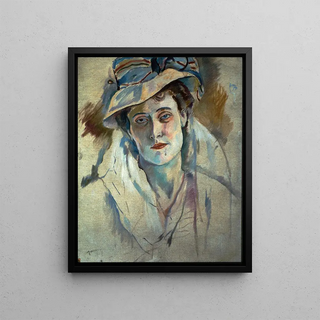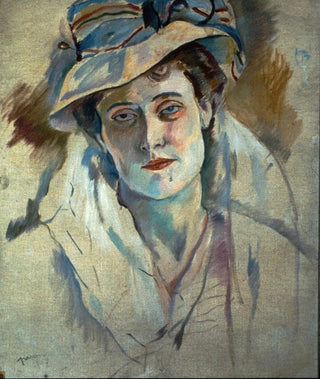Art print | Hermine David - Jules Pascin


View from behind

Frame (optional)
In the world of art, some works transcend their era to become witnesses of a unique sensitivity. The art print Hermine David - Jules Pascin fits into this tradition, offering a fascinating glimpse into the meeting between two artists at the height of their creativity. Hermine David, with her keen eye and undeniable talent, manages to capture the very essence of Jules Pascin, a painter whose bold style and poetic vision have left a mark on 20th-century art history. This piece, far more than a simple image, evokes a vibrant era where modernity and tradition intertwine to give rise to palpable emotions.
Style and uniqueness of the work
The piece stands out for its delicate approach, where each brushstroke seems to tell a story. Hermine David, as a portraitist, succeeds in capturing not only Pascin's physical features but also his soul. The chosen color palette, both soft and vibrant, creates an intimate atmosphere that invites the viewer to immerse themselves in the artist's universe. The play of light and shadow reveals the depth of feelings, while the balanced composition lends the whole a rare harmony. Every detail, from the contemplative gaze to the relaxed posture, testifies to a deep understanding of the subject's psychology. This work is a celebration of individual beauty, while highlighting the richness of human interactions.
The artist and his influence
Hermine David, often less known than some of her contemporaries, nonetheless left an indelible mark on the artistic landscape. Her collaboration with Jules Pascin, a Bulgarian-born artist who found refuge in Paris, was particularly fruitful. Pascin, with his style inspired by Fauvism and Expressionism, influenced many artists of his time, while himself being inspired by the artistic currents surrounding him. The fusion of talents between David and Pascin gave birth to a piece that is not limited to a simple portrait but evokes an era when art was a means of expressing the deepest emotions. The relationship between these two artists, marked by passion and mutual admiration,

Matte finish

View from behind

Frame (optional)
In the world of art, some works transcend their era to become witnesses of a unique sensitivity. The art print Hermine David - Jules Pascin fits into this tradition, offering a fascinating glimpse into the meeting between two artists at the height of their creativity. Hermine David, with her keen eye and undeniable talent, manages to capture the very essence of Jules Pascin, a painter whose bold style and poetic vision have left a mark on 20th-century art history. This piece, far more than a simple image, evokes a vibrant era where modernity and tradition intertwine to give rise to palpable emotions.
Style and uniqueness of the work
The piece stands out for its delicate approach, where each brushstroke seems to tell a story. Hermine David, as a portraitist, succeeds in capturing not only Pascin's physical features but also his soul. The chosen color palette, both soft and vibrant, creates an intimate atmosphere that invites the viewer to immerse themselves in the artist's universe. The play of light and shadow reveals the depth of feelings, while the balanced composition lends the whole a rare harmony. Every detail, from the contemplative gaze to the relaxed posture, testifies to a deep understanding of the subject's psychology. This work is a celebration of individual beauty, while highlighting the richness of human interactions.
The artist and his influence
Hermine David, often less known than some of her contemporaries, nonetheless left an indelible mark on the artistic landscape. Her collaboration with Jules Pascin, a Bulgarian-born artist who found refuge in Paris, was particularly fruitful. Pascin, with his style inspired by Fauvism and Expressionism, influenced many artists of his time, while himself being inspired by the artistic currents surrounding him. The fusion of talents between David and Pascin gave birth to a piece that is not limited to a simple portrait but evokes an era when art was a means of expressing the deepest emotions. The relationship between these two artists, marked by passion and mutual admiration,






